I wanted to sniff communication between two RS232 devices. This link presents a simple solution but I want to make sure that my 'sniffer' does not load the communication link.
To that effect, I was wondering if I could use a MAX-232 as a 'looping' buffer:
RS232 in -->TTL out-->TTL in-->Rs232 out
The MAX-232 will be powered by an external 5v. Is this a fool proof way of sniffing without loading the line? Does the MAX232 even act as a buffer in this configuration? If not. are there inexpensive RS232 buffer ICs available? All the 74xx range of buffer ICs seem to work only at TTL levels.
My communication link is only half duplex.
UPDATE: I think I was not clear with my description. Please see the image:

Both my devices already are on RS232 levels. I simply wanted to read the data using a COM port of the PC, but thought a MAX-232 in between (the loop buffer that I was talking about) might serve as a buffer. But then again, even the PC's COM port per se might have a MAX-232 inside it...
P.S: I have not indicated the capacitors etc for the max232 in the above figure.